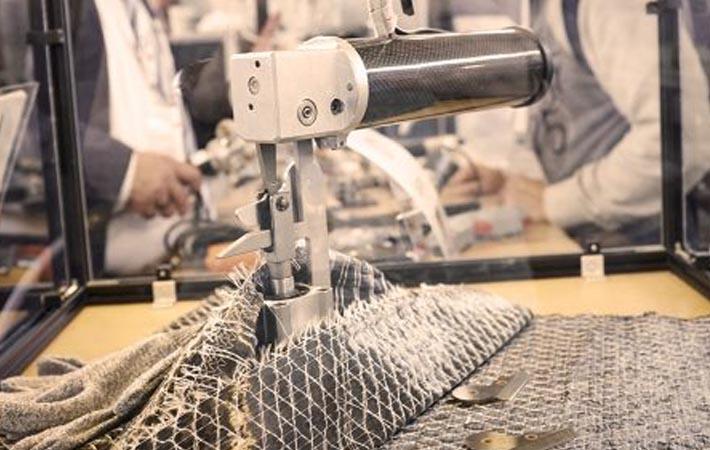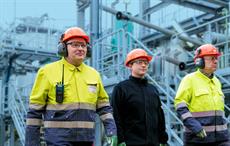Manufacturing processes used to make fibre-reinforced plastics, from raw materials to processing methods to lightweight construction innovations in automotive engineering, aerospace, boatbuilding, wind energy and construction will be showcased at Composites Europe during November 6-8 in Stuttgart. There will be more than 300 exhibitors from 30 countries.
The show will have a display of state-of-the-art technology and the potential of composites – and not just in the exhibition space but also in the numerous event areas, lecture forums, themed guided tours and workshops.Manufacturing processes used to make fibre-reinforced plastics, from raw materials to processing methods to lightweight construction innovations in automotive engineering, aerospace, boatbuilding, wind energy and construction will be showcased at Composites Europe during November 6-8 in Stuttgart. There will be more than 300 exhibitors from 30 countries.#
Composites Europe is held by trade fair organiser Reed Exhibitions in cooperation with the European industry association EuCIA and the trade association Composites Germany, a coalition whose members include the industry associations and clusters AVK, CCeV, CFK-Valley and the VDMA Working Group Hybrid Lightweight Technologies.
The automotive industry, construction, aviation and wind power are the major customer industries for fibre composites, a sector where more and more mass-production applications can be found. By contrast, machine manufacturing as an application area for composite structures is still doomed to a shadowy existence. Quantities are still too small, challenges too complex. However, their outstanding lightweight construction properties thanks to their low density and mass, high strength and stiffness, abrasion, corrosion, temperature and chemical resistance, adjustable thermal expansion coefficient, electrical conductivity as well as their potential for incorporating smart components, make these materials increasingly attractive for machine manufacturers.
Be it gripper systems, cones, con rods, oscillating beams or buncher bows, blades, robot arms, springs, drive shafts, rollers or components for textile and machine tools –many applications in machinery production are already happening with the help of GFP or CFRP.
“There are no big volumes or large series in production yet but there are many niche areas with high potential,” says the study “Serienproduktion von hochfesten Faserverbundbauteilen – Perspektiven für den deutschen Maschinen- und Anlagenbau“ (Mass Production of High-Strength Fibre Composite Components –Perspectives for German Machinery and Plant Manufacturers) published in 2012 by Roland Berger Strategy Consultants and the VDMA-Forum Composite Technology. Experts forecast moderate growth and regard technical necessities as well as efficiency and economic aspects as key drivers.
This forecast is supported by more recent studies. In its current survey of market KPIs for fibre-reinforced plastics Composites Germany polled all member companies of the four professional organisations AVK, CCeV, CFK-Valley and VDMA-Arbeitsgemeinschaft Hybride Leichtbau Technologien and published the results earlier this year in the “10. Composites-Markterhebung” (10th Composites Market Survey). According to this survey, machine manufacturing is stated more and more often as one of the user industries on the composites market expected to generate substantial growth impulses.
In its report “Bestandsaufnahme Leichtbau in Deutschland” (Taking Stock of Lightweight Construction in Germany) published in 2015 the VDI Centre for Resource Efficiency sees machinery and plant construction as a large and growing market for lightweight construction solutions. Manufacturing for the energy sector and medical device technology shows great dynamism, they say. The authors write: “The biggest lightweight construction markets in machinery manufacturing in the short to medium term lie in high-strength steel, aluminium as well as fibre-reinforced plastics (GRP, CFRP, etc).”
The report says that the materials are being increasingly used for moving components. “One research focus is the development of highly dampening, lightweight construction composites designed to achieve higher machining precision and speed, longer service life as well as less tool wear.” In addition to this, experts have identified not only technical but also social benefits associated with the use of composites in mechanical engineering. “Lightweight construction also affords us with a technology for older users since lighter production machinery can reduce work-related loads.”
Within the composites segment applications and market outlooks vary by fibre composite. GRP is predominantly used in the shape of profiles or tubes and tanks in plant manufacturing and they are produced by a spinning or wrapping process. This segment, however, is the “only declining one on the European GRP market,” says the ‘Composites-Marktbericht 2017’. Nevertheless, the potential for tubes is still enormous because GRP only accounts for 3 per cent to 5 per cent of the total market especially for large diameters.
Small market share, big growth potential – this also holds true for CRFP. The experts of Carbon Composites eV admit that machinery and plant manufacturers are still hesitant about using this but materials like this are convincing decision-makers more and more often. Because “these materials give machinery manufacturers many benefits with their high innovation potential, for example,” reads the market study. In various applications highly dampening, lightweight composites permit a substantial reduction in moving masses. This effect and high vibration dampening are extremely advantageous for highly precise machine tools. This allows machines to be designed with smaller drives and for lower machining forces. As a result, precision and quality rise – as do machine and tool life.
In machinery manufacturing composites are predominantly used as sandwich and profile structures in the form of CFRP-boards and profiles while semi-finished CFRP parts are increasingly joined by gluing. These components are suitable for very stiff structures that make for a very high positioning precision even when exposed to enormous acceleration forces. A targeted selection of fibres and corresponding layering allows an advantageous E-modulus to be achieved that is almost twice as high as that of steel despite very low weights. Add to this, CFRP components can be designed for minimum thermal expansion.
Technological advances in the process chain are among the current drivers pushing the development of efficient lightweight construction solutions more than 300 exhibitors from 30 countries and their implementation in high-volume production. (SV)
Fibre2Fashion News Desk – India


